Case Studies.
Add Case Study
Our Case Study database tracks 22,657 case studies in the global enterprise technology ecosystem.
Filters allow you to explore case studies quickly and efficiently.
Download Excel
Filters
-
(6,653)
- (2,601)
- (2,127)
- (945)
- View all
-
(5,642)
- (2,469)
- (1,692)
- (826)
- View all
-
(5,571)
- (2,178)
- (1,766)
- (643)
- View all
-
(5,247)
- (2,179)
- (1,715)
- (1,321)
- View all
-
(2,881)
- (1,448)
- (574)
- (376)
- View all
- View all 15 Technologies
- (1,985)
- (1,985)
- (1,915)
- (1,679)
- (1,629)
- View all 42 Industries
- (8,728)
- (4,742)
- (3,618)
- (3,233)
- (2,947)
- View all 13 Functional Areas
- (3,304)
- (2,787)
- (2,603)
- (2,006)
- (1,630)
- View all 129 Use Cases
- (13,581)
- (5,296)
- (4,272)
- (3,520)
- (2,856)
- View all 9 Services
- (504)
- (432)
- (416)
- (382)
- (301)
- View all 1083 Suppliers
Selected Filters

|
A Hybrid Switchgear-Communication Solution Satisfies Shopping Center’s No-Antenn
Based in Bolton, England, Ascribe is a leading provider of business intelligence (BI) and clinically focused IT solutions and services for the healthcare industry. Ascribe estimates that 82 percent of National Health Service (NHS) trusts in the United Kingdom use its products. With access to large volumes of data maintained by the trusts, the company wanted a BI solution that would help healthcare providers detect, predict, and respond more quickly to outbreaks of infectious disease and other health threats. Healthcare analysts typically work from data collected and coded when patients receive treatment in clinics and hospitals. “By the time they get that information it’s usually out-of-date,” says Paul Henderson, Business Intelligence Division Head at Ascribe. “The data has already been coded and stored in a record-keeping system, or it’s been collected from a hospital workflow, and that doesn’t always happen in real time.” In addition, huge volumes of potentially useful data existed in text files from sources such as unscheduled visits to emergency rooms, school attendance logs, and retail drug sales. The Internet offered another trove of untapped information including clickstream analysis and social media such as Twitter. “If you think about each clinician who struggles with getting timely, accurate data, and you compound it on a national scale, then it becomes an immense challenge,” says Henderson. “You have lots of small pieces of data coming in from multiple places, and it can be very difficult to aggregate and interpret.”Ascribe had previously worked on a solution to support the analysis of national emergency care attendance. The system was designed to monitor the daily number of people who visited emergency departments in the UK and raise an alarm when it identified unusual levels of activity such as a potential outbreak of an infectious disease. However, it was difficult to collect data from a rapidly growing number of healthcare providers, including mobile clinicians. In addition, clinicians were unable to use the exploding volume of unstructured data from patient case notes and social media feeds. “The processing power you would need to handle all of that information is beyond the capability of most organizations,” says Henderson. “A hospital can’t just stand up a server farm to process millions of case notes from an emergency care system in addition to other data.” To solve these problems, Ascribe decided to design a proof of concept that would create a standardized approach to working with healthcare data. The company asked Leeds Teaching Hospitals, one of the biggest NHS trusts in the UK, to participate in the project. Leeds can generate up to half a million structured records each year in its Emergency Department system. The hospital also generates approximately 1 million unstructured case files each month.Ascribe wanted to create not just a proof-of-concept BI solution for monitoring infectious disease on the national level, but also a tool that could be used to improve operations for local care providers. “Our goal was to find a way to make data flow more quickly in near-real time,” says Henderson. “We also wanted to augment clinically coded data with data harvested from case notes.” The company wanted to create a national knowledge base that both analysts following disease outbreaks and local clinicians could use to improve healthcare. Ascribe needed a highly scalable, end-to-end solution that could work with multiple data types and sources, as well as provide self-service BI tools for users.
|
|
|
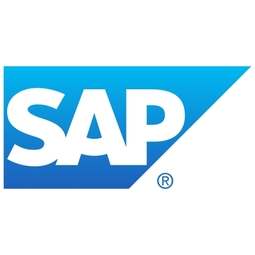
|
Providing a Next-Generation Air Service with SAP® Leonardo Internet of Things
To optimize its Sigma Smart AirService, Kaeser worked with SAPDigital Business Services to deploySAP Leonardo IoT capabilities as its innovation foundation together with SAP Asset Intelligence Network and SAP Predictive Maintenance and Service. Kaeser’s new solution connects its compressors smartly in the cloud, allowing it to offer a next-generation service at a lower price.Challenges:- Service team unable to access calibration data and other equipment-specific information, which was stored in on-premise systems- No solution to meet the needs of dealers and companies’ service providers- Need for track-and-trace capabilities with selected suppliers to scale-up potential
|
|
|
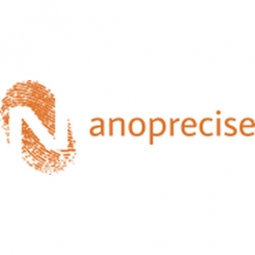
|
Automatic monitoring of acoustic emission saves catastrophic failure
Traditional measurement tools are ineffective when it comes to slowly rotating equipment. There are faults like Bearing Failure, Ring Plugging, Gear Tooth Crack and many more which can lead to the shutdown of machines. 1 minute of downtime cost the company $10. RingPluggingis a very common issue which Pinnacle Pellet was facing very frequently due to diverse feed quality into the machines. Product ring plugging can be detected as sound levels increase in specific roller bearings.
|
|
|

|
Wintrust's Network Transformation: A Case Study on Enhanced Stability and Security
Wintrust Financial Corporation, a financial holding company with over $45 billion in assets, was seeking to enhance their data and voice networks to support their continuing growth. The company was looking for a more effective, stable network that could support its operations and pave the way for future expansion. As the company grew, officials wanted to ensure stable and consistent network performance and prevent any points of failure. The challenge was to find a solution that would provide highly secure, scalable, and reliable connectivity, while also supporting the company's expanding business.
|
|
|
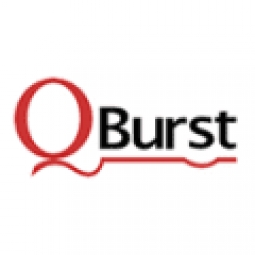
|
AI-Based Robot Calibration
The client was in the process of developing a smart table tennis robot that can be controlled by a mobile app. The app can be used by players to configure or choose from a list of pre-programmed drills. The robot plays the drills and programs as per user configuration; however, performance reduces over time due to aspects such as the wear and tear of machine parts. Additionally, faulty installation, errors in table dimensions, and alignment changes caused during shipping impact accuracy.QBurst was tasked with improving firmware performance. The project would focus on enhancements to the calibration mechanism of robots leading to improved gameplay and user satisfaction. The client wanted the calibration mechanism to be easy to use and repeatable.
|
|
|
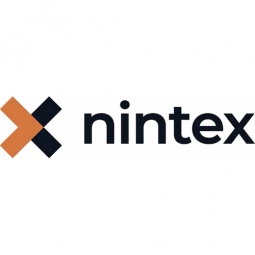
|
Lippuner Digitally Transforms Paper-based Ordering Processes
Lippuner has nearly 350 employees across four cities. Each employee orders new phones every two years. Their marketing department generates about 450 orders per year across 41 different items—for a total of 18,450 orders. In the past, these orders were processed using paper forms, causing slowdowns and adding time to the process. These outdated processes didn’t comply with the company’s high standards of efficiency.
|
|
|
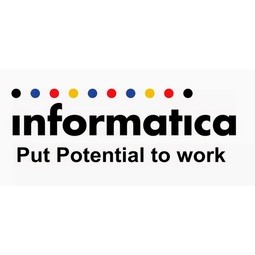
|
Emerson Process Management
Emerson's old address verification systems couldn't handle language barriers and non-standardized address formats, which proved to be a major obstacle in dealing with international address validation. Emerson needed an address verification system that would cover their expansive list of countries and native character sets, provide superior customer support and be simple and cost-effective to implement and manage.
|
|
|
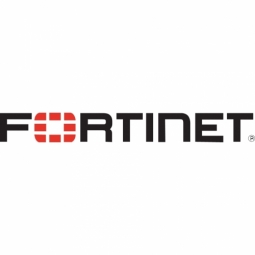
|
IoT Implementation in Furniture Manufacturing: A Case Study of Steelcase
Steelcase, a renowned manufacturer of office furniture, has always viewed technology as a key differentiator in its business. The company recently introduced Workplace Advisor and Personal Assistant, a space sensing network and mobile app designed to help organizations harness big data to optimize the workplace. However, as Steelcase operates globally and distributes through a network of independent and company-owned dealers, as well as selling directly to end-users, the company faced challenges in securing its data both on-premises and in the cloud. The company had been using the Microsoft Azure platform for its web infrastructure and was developing a cloud-based e-commerce system using Amazon Web Services (AWS). However, the security controls and visibility provided with these cloud platforms were basic and not to the level of sophistication that Steelcase's policies required.
|
|
|

|
Automotive Software Solutions Provider Revs Up Its Customer Security
Helping Small Businesses Overcome Big ThreatsThe majority of CDK’s customers are small in size and consequently may not have the resources, personnel, or expertise to comprehensively protect their networks.
|
|
|
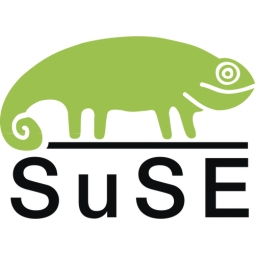
|
SAP SE Enhances Efficiency and Reduces Costs with SUSE
SAP SE, a leading enterprise applications and cloud services company, was looking to expand its offerings by launching a cloud platform to deliver SAP solutions. The goal was to create comprehensive software-as-a-service (SaaS) and platform-as-a-service (PaaS) offerings that would allow existing customers to reduce their infrastructure investments and lower barriers to entry for potential new customers. However, to meet the demand for always-available business applications, SAP needed to ensure its cloud offering would meet enterprise requirements. This meant that the platform had to be stable, secure, and highly flexible, with no margin for service interruptions or maintenance windows. As the company's cloud business was expanding rapidly, it was also crucial to use resources as efficiently as possible to realize economies of scale, increase profits, and build a sustainable SAP cloud business model.
|
|
|

|
Ather Energy: Revolutionizing Mobility in India with BigQuery and Cloud IoT Core
Ather Energy, a Bengaluru-based startup, aimed to redefine the mobility segment in India by creating the country's first intelligent electric scooter. The founders, Swapnil Jain and Tarun Mehta, envisioned a scooter that could navigate the complex Indian terrain and evolve based on road data, driving habits, and vehicle performance. However, with a small team of engineers and limited resources, they faced the challenge of not only building intelligent applications but also designing a new lithium-ion battery, developing a robust motor, and creating a touchscreen dashboard that could withstand harsh conditions. Additionally, they lacked the time and resources to develop data analytics or maintain IT infrastructure.
|
|
|
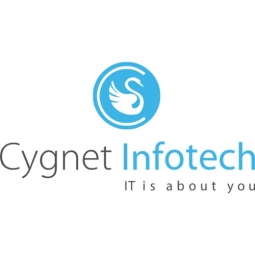
|
Developed a digitalized warehouse management system
Manual errors in warehouse managementProblems such as inventory theft, delayed shipment, and the need for double verification of inventory
|
|
|
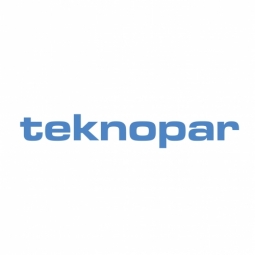
|
Real-Time Welding Optimization with Welding Robot
Automating welding processes with robots enhances productivity and environmental friendliness. However, the quality of robotic welding can deteriorate due to various factory conditions. Continuous monitoring and adjustments are necessary to maintain high standards.
|
|
|
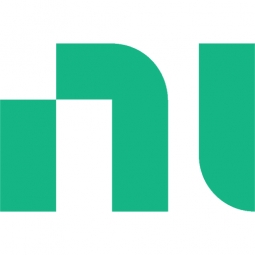
|
National Instruments selected Attivio Platform for Superior Search Functionality
National Instruments was concerned about the future state of its enterprise search solution. Microsoft’s FAST ESP was no longer offered as a stand-alone product and it was marked for end-of-life, effective July 2013.
|
|
|

|
Continuous condition monitoring pays off at a large power utility
A large power utility in Hawaii was looking for more frequent condition monitoring on their Balance of Plant (BOP) generation assets. They had experienced significant equipment failures that occurred between their scheduled quarterly walkaround condition monitoring routes.
|
|
|

|
Starbucks' #WhatsYourName Campaign: A Case Study in Diversity and Inclusion
The Channel 4’s Diversity in Advertising Award for the year was centered around the theme of challenging the lack of representation and stereotyping of the LGBT+ community in advertising. The insight that only 0.3% of TV adverts feature a transgender person, despite the community making up an estimated 1% of the population, presented an opportunity for Starbucks to re-ignite itself as a progressive brand. Starbucks had a strong heritage with the LGBT+ community and the challenge was to build on this heritage and address the lack of representation in advertising. The campaign needed to focus on the importance of identity and acceptance, and bring to life Starbucks’ signature act of writing people’s names on cups in a powerful way.
|
|
|

|
Innovative Digital Marketing Strategy for Samsung Home Appliances
Samsung, a global leader in technology, was faced with the challenge of promoting its innovative range of home appliances without resorting to traditional advertising methods. The company wanted to create a unique and engaging campaign that would not only showcase the features of its products but also resonate with its target audience. The challenge was to generate a significant impact in a typically low-interest category and differentiate Samsung's offerings from its competitors. The company needed a strategy that would not only drive brand awareness but also create an emotional connection with consumers.
|
|
|
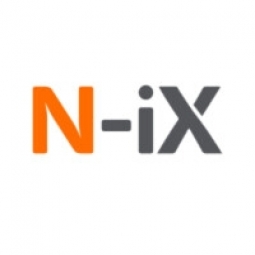
|
Revolutionizing Warehouse Management: Bitlog's Digital Solution
Bitlog, a Sweden-based company specializing in supply and logistics software solutions, was in need of a reliable software development partner to design and develop a state-of-the-art warehouse automation system. The goal was to create a user-friendly iOS application with extensive functionality. A crucial aspect of the project was UX design, which was required to ensure the smooth operation of the product. The challenges faced by the UX specialists at N-iX, the software development partner, included structuring the requirements and breaking down all the processes into user flows according to specific roles, and creating an intuitive UX to ensure smooth operation of warehouses. The efficiency of a typical warehouse depends on delivery planning and numerous logistics operations, which include dozens of coordinated activities performed by different employees. Warehouse automation systems need to include all these operations and also account for unforeseeable circumstances.
|
|
|

|
Bank of Tibet Accelerates Deployment of Efficient Data Centers
Build Two Green and Efficient Data Centers in Four MonthsOver a period of just four months, the Bank of Tibet needed to complete hardware procurement and software testing for two data centers and have them ready to go live. The two data centers needed an active-active configuration to ensure data security and business continuity, and allow the Bank of Tibet to meet the requirements for green and efficient data centers.
|
|
|
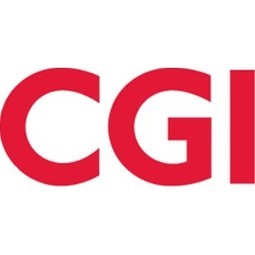
|
Jacobs Douwe Egberts: Effectively mitigating risks with OT cybersecurity insight
JDE needed a partner with the expertise to provide a comprehensive overview of all cybersecurity risks and vulnerabilities across its factories. This included all operational technology computing systems used to manage the entire industrial operation.
|
|
|
|
|
How AI is Transforming Manufacturing
Allowing defects to escape the factory damages customer relations and the brand, and leads to costly rejects or returns, while overcontrolling for defects internally leads to high labor, scrap, and rework costs. The pernicious problem of defect detection was supposed to be solved by machine vision inspection, but in many instances machine vision systems are not up to the task.No condition monitoring on valves & motors.Root cause analysis on failed equipment was difficult or nonexistent.Engineers spend hours per week producing spreadsheets and analytics.
|
|
|
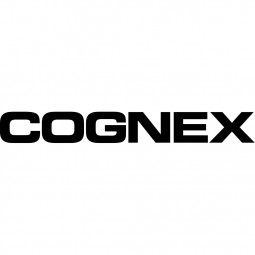
|
Cognex VIDI Kit: Deep Learning for the Automotive Industry
The piston's compression ring serves several functions in a reciprocating engine, including sealing the combustion chamber and regulating fuel consumption. Defects on the compression ring are difficult to detect due to the reflective metal surface of the piston. The cylindrical shape of the piston is sometimes blurred and out of focus in the image. Normal variations in metal surface texture are expected as part of the manufacturing process, and some of these variations are acceptable, including rust spots, white areas, and surface cracks and fissures. But some long scratches that affect piston performance and threaten compression levels in the cylinder are the real flaws. The inspection system must be able to ignore normal variations and insignificant anomalies on the compression ring surface while identifying longer scratch defects.To program such complex inspections to rule-based algorithms would require complex defect databases. While manual detection is more flexible, it is too slow.
|
|
|

|
IWT's Transformation: Customizing with Efficiency in IoT
IWT, a company specializing in the design, manufacture, and installation of washing systems for the life sciences and pharmaceutical industries, faced a significant challenge in managing its wide product portfolio. The company manufactures 45 different models, 60% of which are customized to some degree. This high level of customization, combined with limited production quantities, necessitated a controlled process for managing the release of engineering changes. The goal was to achieve efficiency, reduce process time, and better coordinate production throughout the organization. The need for strict compliance in heavily regulated industries further complicated the situation. IWT's existing PLM journey with Dassault Systèmes’ SOLIDWORKS for 3D CAD and Enovia for managing CAD data and Bills of Materials (BOMs) was proving inadequate. The system had limited part classification, no workflow, and no tool to ensure data consistency. The management of non-CAD documents was also a challenge, with information often difficult to find and access.
|
|
|

|
RPA Solution for Shipment Tracking: A Case Study
The client, a leading service provider to the international engineering industry, was facing significant challenges in tracking and managing the status of shipments. The existing legacy systems and manual processes were cumbersome, time-consuming, and prone to errors, leading to inaccuracies and productivity losses. The client required a solution that could improve visibility, efficiency, quality of service, and profitability by tracking the lifecycle of shipments. The need was for a solution that could provide real-time tracking of worldwide shipment details, and could be maintained within the SharePoint environment for reporting and analytics.
|
|
|

|
Rapid Hybrid Services Deployment for Global Semiconductor Company
The U.S. manufacturer of engineered materials, optoelectronic components, and semiconductors was focused on growth through mergers and acquisitions (M&As). In 2019–2020, it acquired a global electronics firm and needed immediate connectivity and visibility into the acquired firm’s geo-distributed operations. The company had a highly compressed timeline, with only days to integrate the firm’s DDI operations, while deferring a full network migration to a future date. The company was actively engaged in acquiring and merging strategically aligned companies as a key global growth strategy. The company needed to rapidly integrate its new operations, which included significant remote locations in Asia. The company turned to Infoblox to quickly design a highly secure, available, and reliable solution that could deliver full visibility into new sites. It needed dynamic scalability to accommodate its growing operations and the ability to unify a disparate, geo-diverse infrastructure.
|
|
|

|
Sony Italia's Server Consolidation: A Cost-Saving Success
Sony Italia, a branch of the global electronics giant Sony Corporation, was facing a significant challenge with its IT infrastructure. The company had consolidated most of its IT infrastructure into two data centers in the U.K, but Sony Italia opted to maintain its local server infrastructure for high performance and ease of maintenance. However, as data volumes and user numbers grew, the servers began to experience reduced performance and reliability. The company had 30 physical servers, but with limited budgets, replacing all of them was not feasible. Additionally, Sony Italia was concerned about the increasing heat output and electricity consumption in the data center. The company had already virtualized about half of its infrastructure, but needed a more cost-effective solution to extend these benefits.
|
|
|

|
Transforming Clinical Asset Ecosystem: A Case Study of Parkland Health
Parkland Health, a renowned healthcare institution, was facing several challenges in managing its clinical asset ecosystem. The existing data validity was not meeting the requirements of the Clinical Engineering (CE) and Information Security (IS) teams. The existing workflows were not aligned with the strategic vision of the leadership. The institution was unable to dynamically update their computerized maintenance management system (CMMS), which was crucial for efficient asset management. There were significant change-management hurdles between isolated teams, which were hindering the smooth execution of projects. Moreover, Parkland had allocated an insufficient budget to maintain project momentum and meet all expected outcomes.
|
|
|
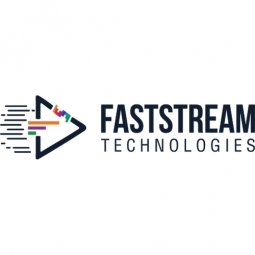
|
WIRELESS SPEACKER
According to the requirement of the design, the MP3 decoding module, Wi-Fi module, Power amplifier module, Audio channel selection module, Bluetooth audio receiver module, and radio module was designed. STM32 series microcontroller is the main control chip, the music in other storage media are decoded and played through the MP3 decoder chip. By selecting a sound module like Bluetooth audio module, Wi-Fi wireless connection with mobile, or receiving music by radio module, the input can be given to the amplifier. In this design, data transmission by the wireless way can reduce wiring work.
|
|
|

|
Università degli Studi di Udine
University of Udine is a college committed to the highest education standards, research, interaction with surrounding territories. The collaboration with Endian brought its technological vocation beyond the academic field to translate into a project aimed to protect and safely manage accesses to electrical and thermal control systems, access control and video surveillance.
|
|
|

|
Wireless Predictive Maintenance to Fix a Dated Walk-Around Program
C&W Services was using a manual condition monitoring program at one of its leading life sciences’ client up until last year. At best, data was collected manually every 30 days, even on the most critical machines, using a handheld data logger. After the data collection, all of the data analysis had to be outsourced to a third party for analysis. This approach has several limitations:1. Unplanned Downtime2. Shortage of Manpower3. Safety and Access to Machines4. Inconsistent Readings Collected by Manual Processes
|
|




